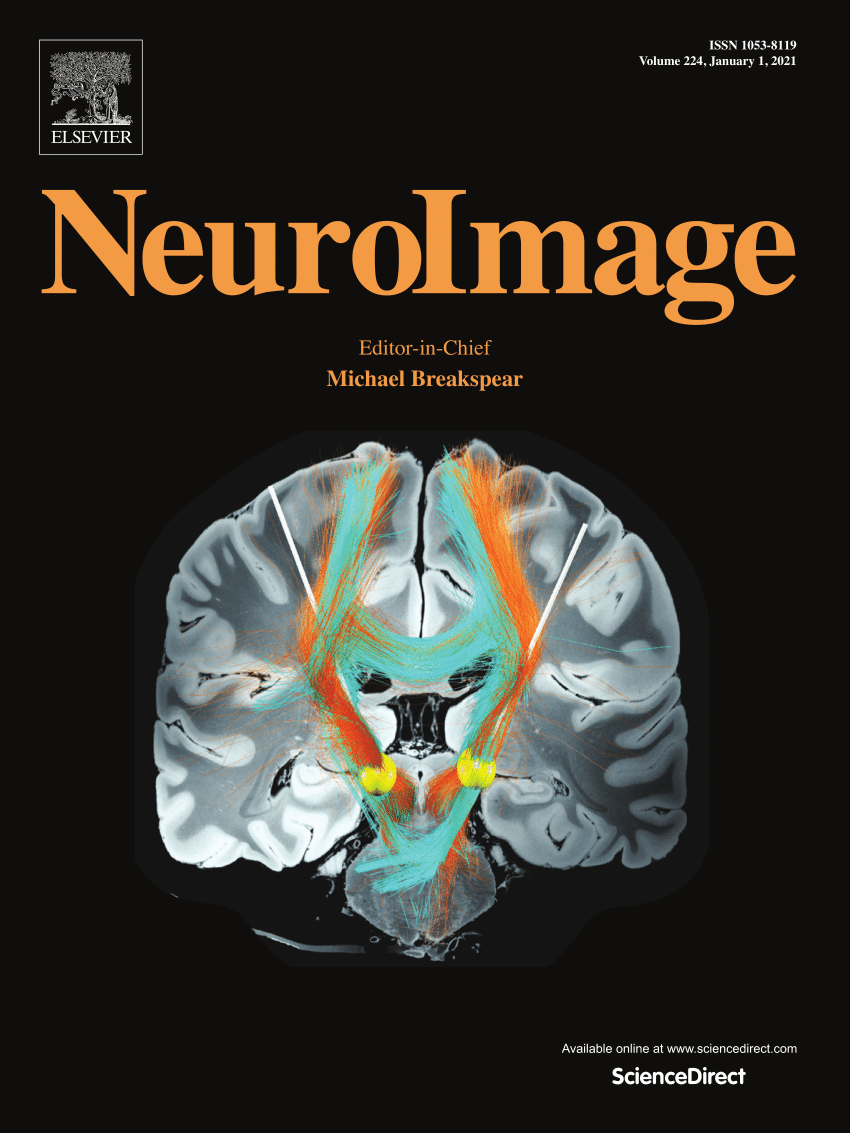Relaxometry network based on MRI R2⁎ mapping revealing brain iron accumulation patterns in Parkinson's disease
IF 4.5
2区 医学
Q1 NEUROIMAGING
引用次数: 0
Abstract
Background
Excessive iron accumulation in the brain has been implicated in Parkinson's disease (PD). However, the patterns and probable sequences of iron accumulation across the PD brain remain largely unknown. This study aimed to explore the sequence of iron accumulation across the PD brain using R2* mapping and a relaxometry covariance network (RCN) approach.
Methods
R2* quantification maps were obtained from PD patients (n = 34) and healthy controls (n = 25). RCN was configured on R2* maps to identify covariance differences in iron levels between the two groups. Regions with excessive iron accumulation and large covariance changes in PD patients compared to controls were defined as propagators of iron. In the PD group, causal RCN analysis was performed on the R2* maps sequenced according to disease duration to investigate the dynamics of iron accumulations from the propagators. The associations between individual connections of the RCN and clinical information were analyzed in PD patients.
Results
The left substantia nigra pars reticulata (SNpr), left substantia nigra pars compacta (SNpc), and lobule VII of the vermis (VER7) were identified as primary regions for iron accumulation and propagation (propagator). As the disease duration increased, iron accumulation in these three propagators demonstrated positive causal effects on the bilateral pallidum, bilateral gyrus rectus, right middle frontal gyrus, and medial and anterior orbitofrontal cortex (OFC). Furthermore, individual connections of VER7 with the left gyrus rectus and anterior OFC were positively associated with disease duration.
Conclusions
Our results indicate that the aberrant iron accumulation in PD involves several regions, mainly starts from the SN and cerebellum and extends to the pallidum and cortices. These findings provide preliminary information on sequences of iron accumulation in PD, which may advance our understanding of the disease.
基于磁共振成像 R2* 图谱的松弛测量网络揭示了帕金森病的脑铁积累模式。
背景:大脑中铁的过度积累与帕金森病(PD)有关。然而,帕金森病大脑中铁积累的模式和可能的顺序在很大程度上仍然未知。本研究旨在利用R2*图谱和弛豫协方差网络(RCN)方法探索帕金森病大脑中铁积累的顺序:方法:从帕金森病患者(34 人)和健康对照组(25 人)中获取 R2* 定量图。在 R2* 地图上配置 RCN,以确定两组之间铁水平的协方差差异。与对照组相比,帕金森病患者体内铁积累过多且协方差变化较大的区域被定义为铁的传播者。在帕金森氏症组中,对根据病程排序的 R2* 地图进行了因果 RCN 分析,以研究来自传播者的铁积累的动态变化。在帕金森病患者中分析了RCN的个别连接与临床信息之间的关联:结果:左侧黑质网状旁(SNpr)、左侧黑质紧密旁(SNpc)和蚓部第七小叶(VER7)被确定为铁积累和传播(传播者)的主要区域。随着病程的延长,这三个传播区的铁积累对双侧苍白球、双侧直肌回、右额叶中回以及眶额叶皮层(OFC)的内侧和前部产生了正向因果效应。此外,VER7 与左侧直回和前侧 OFC 的单个连接与病程呈正相关:我们的研究结果表明,帕金森病的异常铁积累涉及多个区域,主要从鼻窦和小脑开始,并延伸至苍白球和大脑皮层。这些研究结果提供了有关帕金森病铁蓄积序列的初步信息,有助于我们加深对该病的认识。
本文章由计算机程序翻译,如有差异,请以英文原文为准。
求助全文
约1分钟内获得全文
求助全文
来源期刊

NeuroImage
医学-核医学
CiteScore
11.30
自引率
10.50%
发文量
809
审稿时长
63 days
期刊介绍:
NeuroImage, a Journal of Brain Function provides a vehicle for communicating important advances in acquiring, analyzing, and modelling neuroimaging data and in applying these techniques to the study of structure-function and brain-behavior relationships. Though the emphasis is on the macroscopic level of human brain organization, meso-and microscopic neuroimaging across all species will be considered if informative for understanding the aforementioned relationships.
 求助内容:
求助内容: 应助结果提醒方式:
应助结果提醒方式:


